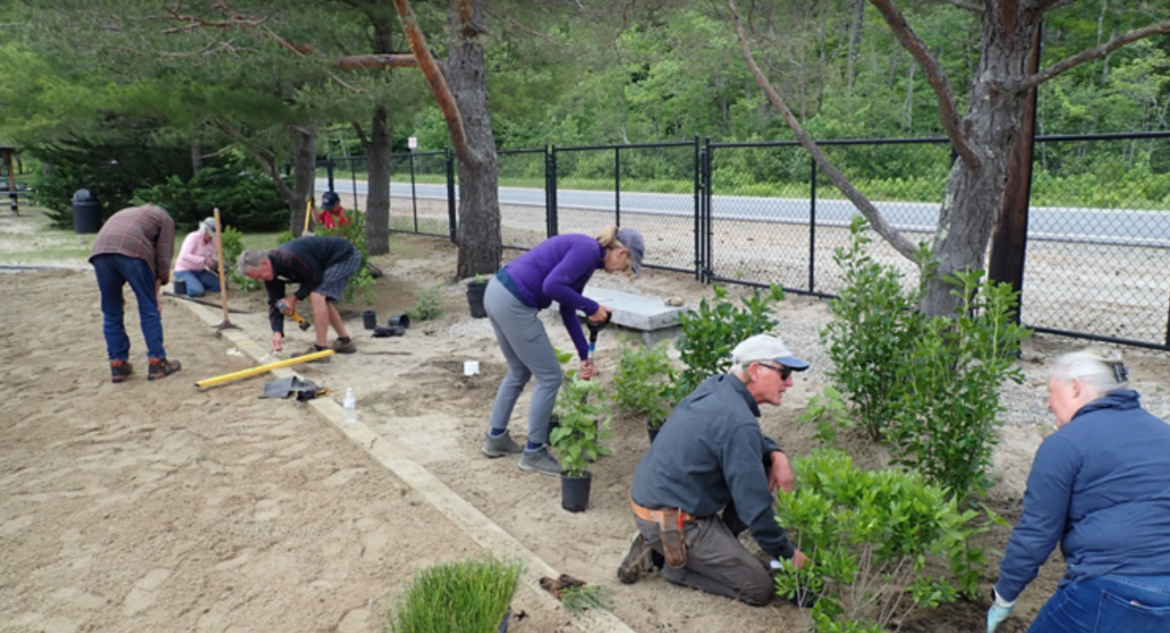By PAULA TRACY, InDepthNH.org
MEREDITH – Cyanobacteria advisories and alert warnings for swimmers and pet owners to avoid blooms on Lake Winnipesaukee have ended after blooms were reported in Center Harbor at its town beach, Meredith Town Docks, Tuftonboro, Moultonborough, Wolfeboro, and Gilford areas near The Broads.
The red warning signs are now down on the big lake.
Cyanobacteria warnings and watches have the attention of many lake associations across the state as New Hampshire faces its worst summer ever dealing with toxins emitted from the blooms of blue green algae.
Some have cropped up in new places where they have never been seen before and far earlier due in part to a mild winter.
According to the New Hampshire Department of Environmental Services: “Warnings are issued when the cyanobacteria cell density exceeds the recreational health threshold of 70,000 cyanobacteria cells/mL. This density is associated with the level at which toxins may be present at a concentration that threatens public health.
“Exposure primarily occurs through ingestion and skin contact. Symptoms of exposure to cyanobacteria vary but can include skin irritation, stomach cramps, vomiting, nausea, diarrhea, fever, sore throat, headache, muscle and joint pain, mouth blisters, and acute liver damage. When there is a warning, NHDES advises lake users to avoid contact with the water. Pets and livestock should also be kept out of the water.”
NHDES recommends staying out of the water when a cyanobacteria warning is posted. This includes swimming, wading and any activity that may result in direct contact with the water. NHDES also recommends against using the water for drinking even when boiled or filtered, dish washing, bathing and other household uses when a warning is in place. Children and pets are particularly vulnerable to cyanotoxins.
Some lake associations are now working together to combat the problem which is often exacerbated by stormwater runoff from roads.
In addition to health impacts, cyanobacteria can impact real estate values, and tourism, the state’s second largest sector of the economy.
Currently there are watches (alerts) for areas on Nubanusit Lake in Nelson and Hancock issued on June 21 and on Lake Kanasatka in Moultonborough, which were reported on June 26, and one current warning or advisory for Mill Pond in Alton, according to the state Department of Environmental Services.
In Barrington, a warning for Swains Lake was just removed. The warning there was issued on June 19 but removed on June 27.
No cyanobacteria were found in any of the samples that the DES had taken, according to Kate Hastings, who works in the DES watershed management bureau.
Andrea LaMoreaux, executive director of the New Hampshire Lakes Association said 2024 is turning out to be a particularly bad year for cyanobacteria in part because of the warm winter where some lakes did not freeze for long. She said freezing offers a reset button but without it, problems increase and begin earlier than usual.
In an email to Swains Lake area residents, Hastings wrote “while the bloom accumulation has dissipated, NHDES advises that lake-goers look out for discoloration or surface accumulations in the future. Please continue to monitor your individual shoreline for changing conditions.”
The red cyanobacteria advisory signs can now be removed from public access points, she said.
“Thank you all for your communication. If you see cyanobacteria in the future, please report it through the bloom report form.”
In the Lake Sunapee area, a number of groups are working together on the problem for the first time this summer.
The Lake Sunapee Protective Association announced Thursday it has partnered with the Little Lake Sunapee Protective Association and the Town of New London to implement several stormwater best management practices at Bucklin Beach on Little Lake Sunapee.
In early June, volunteers constructed a rain garden near the beach entrance that is designed to intercept stormwater debris being washed onto the beach from Little Lake Sunapee Road.
Prior to the rain garden installation, stormwater was scouring the beach in this area washing sand and other materials into the lake.
“This project is a great example of how town governments, lake associations and communities can work together to make a difference in protecting one of the region’s most precious and fragile natural resources – and do so quickly and efficiently,” said Mike Morgan, member of LSPA and volunteer coordinator for this effort.
The rain garden will help prevent downstream erosion of the beach and prevent nutrient loading into the lake reducing the likelihood of algal and cyanobacteria blooms. This project addresses stormwater erosion at a site that was identified in the 2020-2030 Lake Sunapee Watershed Management Plan. This is one of many important steps in meeting the water quality goal in the plan.
The state Department of Environmental Services has been issuing grant funding to help lake associations with water quality needs and monitoring services which are often matched by the lake associations.
This fall, several other stormwater best management practices will be implemented at this site with assistance from the New London Public Works Department.






